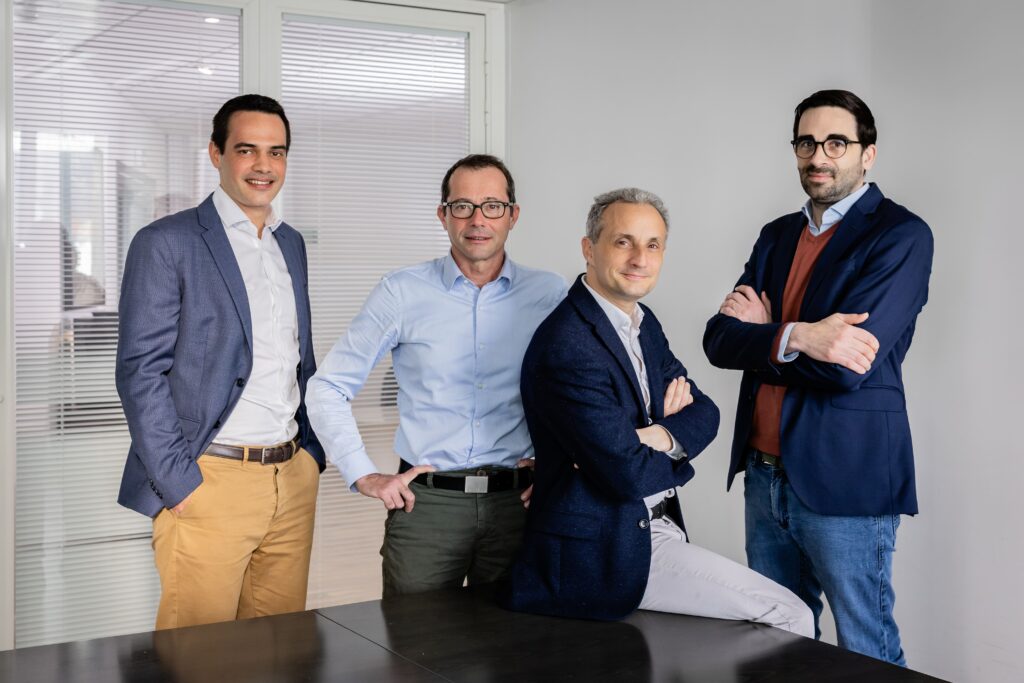Insider Brief
- Scientists from Princeton University have devised a fresh method for constructing quantum repeaters, enabling quantum computer linkage across extended spans.
- The novel system efficiently transmits signals with minimal losses through optical fibre, achieving a historic objective in fortifying quantum communication networks.
- The technology employs telecom band light, a significant advancement that propels the realization of resilient quantum communication networks.
A study from Princeton University, recently published in Nature on August 30, unveils a groundbreaking method to establish connections between quantum devices over significant distances, a pivotal advancement for the quantum computing industry’s evolution towards integrated communication systems.
Important Role to Play
In contrast to conventional data signals that can be amplified and transmitted across extensive urban expanses or oceanic stretches, quantum signals encounter a distinct limitation — they cannot be simply amplified. Instead, quantum signals necessitate a more intricate process involving intervals of cessation, replication, and transmission through specialized apparatus known as quantum repeaters. The overarching consensus among experts is that these quantum repeaters will play a central role in shaping future communication networks, offering augmented security and enabling seamless interactions between remote quantum computers.
The pioneering Princeton study, led by principal author Jeff Thompson, delves into an innovative approach to constructing quantum repeaters. This novel technique employs telecom-ready light emanating from a solitary ion implanted within a crystal. The journey leading to this discovery spans numerous years, culminating in the integration of advancements in photonic design and materials science.

Diverging from existing quantum repeater designs that emit light in the visible spectrum — a light form prone to rapid degradation over optical fibre and necessitating conversion for extended travels — the newly devised apparatus hinges upon a singular rare earth ion embedded within a host crystal. Importantly, this ion emits light at an optimal infrared wavelength, rendering the need for signal conversion unnecessary. The consequential effect is the potential establishment of simpler, more resilient networks.
Essentially, the device consists of two integral components: a calcium tungstate crystal infused with a small quantity of erbium ions, and a minuscule segment of etched silicon configured in a J-shaped channel. Under the influence of a specialized laser, the ion emits light upward through the crystal. Concurrently, the silicon segment, a delicate semiconductor fragment affixed to the crystal’s apex, captures and directs individual photons into the fibre optic cable.
The overarching objective entails encoding this photon with information derived from the ion, more precisely from a quantum attribute of the ion referred to as spin. Within the realm of a quantum repeater, amalgamating and intersecting signals from remote nodes culminates in the generation of entanglement between their spins. This entanglement facilitates the end-to-end transmission of quantum states despite inevitable losses along the transmission trajectory.
Erbium Ions
Thompson’s research team embarked on their journey with erbium ions several years ago. Initial iterations employed diverse crystals that introduced excessive noise. This noise, responsible for inducing erratic fluctuations in emitted photon frequencies — termed spectral diffusion — proved detrimental to the delicate quantum interference pivotal for the operation of quantum networks. To surmount this challenge, Thompson’s team collaborated with Nathalie de Leon, an associate professor of electrical and computer engineering, and Robert Cava, a distinguished solid-state materials scientist and Princeton’s Russell Wellman Moore Professor of Chemistry. Their collective efforts culminated in the identification of materials capable of hosting single erbium ions with significantly reduced noise. A rigorous selection process whittled down hundreds of thousands of candidates to a handful of promising contenders, eventually leading to the selection of calcium tungstate as the optimal choice.
Demonstrating the material’s aptitude for quantum networks, the researchers constructed an interferometer. This device allows photons to traverse either a short path spanning a few feet or an extended path spanning 22 miles, facilitated by spooled optical fibre. Photons emitted from the ion could opt for either path, occasionally resulting in consecutive photons adopting opposing routes, ultimately converging at the output simultaneously.
When such photon collisions transpire, quantum interference dictates that photons will exit the output in pairs exclusively if they are inherently indistinguishable — characterized by identical shape and frequency. Alternatively, photons exit individually if these conditions are not met. The researchers observed a notable suppression, amounting to a remarkable 80 percent, of individual photons at the interferometer’s output. This observation definitively established that the erbium ions in the new material emit indistinguishable photons. Salim Ourari, a co-leading graduate student researcher, affirmed that this outcome places the signal substantially above the established hi-fi threshold.
Still Work to be Done
While this accomplishment represents a pivotal milestone, further work is essential to enhance the storage duration of quantum states in the erbium ion’s spin. The ongoing focus of the team is to refine the production of calcium tungstate, striving to minimize impurities that disrupt quantum spin states. This relentless pursuit of improvement underscores the dynamic nature of the quantum computing landscape and its ceaseless drive toward realizing the full potential of quantum communication.
SOURCE: Materials provided by Princeton University, Engineering School. Original written by Scott Lyon
Featured image: Credit: Ryzen, AI-generated image, courtesy of Playground AI
For more market insights, check out our latest quantum computing news here.
















